Let’s go to Seville: a city break to be enjoyed
18 July, 2019
Seville is the capital of the Andalusia region, Spain’s most southerly province, and has just the climate for a winter camping trip. Given the city’s inland location and the fact that the nearest beach is at least an hour away, it’s less popular as a destination than cities such as Málaga and Valencia, which is a real shame.
The city has really stolen my heart. I lived and studied here for six months, and two years later, I returned for a few days to what is Spain’s most beautiful city, if not the world’s most beautiful city. I’d like to take you along on my city break to the most impressive squares and most significant sights the city has to offer.
Sightseeing in Seville
The city itself is a sight. You’ll be astonished by the beautiful building fronts, the little balconies and delightful squares dotted with tall trees and palms. Nevertheless, there are some sights that any visitor to Seville must visit.
Plaza de España: the most beautiful square in the world
Plaza de España was constructed for the Latin American exposition in 1929, to celebrate the relationship between Spain and its former colonies. A project by architect Aníbal González, it is a true masterpiece and one of the most loved squares in the city. You can stroll around in the square for hours and you’ll always discover something new, each thing with its own significance. Some are obvious, such as the benches along the buildings – one for each of Spain’s 48 provinces, while others are less obvious, such as the four bridges representing the four former kingdoms of Spain.
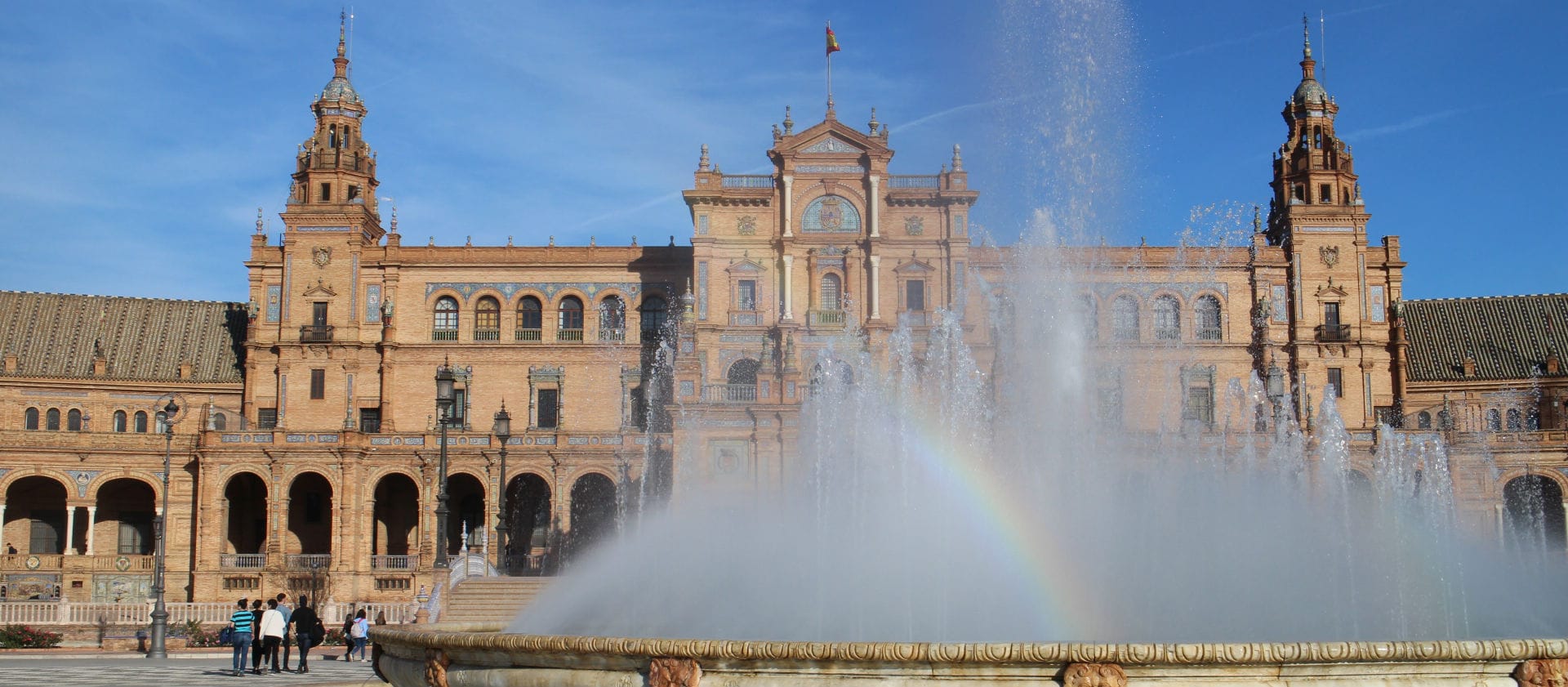
The square is adored by tourists, but the locals love it just as much and spend their time relaxing in the adjacent park or taking advantage of the great setting for their wedding photos – in the summer months, you’ll find many a bride taking a stroll across the square. Hollywood has even recognised the potential of Plaza de España and has used it as a filming location for films such as Lawrence of Arabia and Star Wars: Episode II.
Tip: don’t visit the square around midday as there’s little shade to be enjoyed. There are no opening times, so you’re welcome to visit any time.
Real Alcázar: regal palace at the heart of the city
Real Alcázar is a mediaeval palace in Seville built by the Moors. When the royal family is in Seville, Real Alcázar is where they reside.
And if you think that mediaeval palace means cold stone walls and dark dungeons, think again! Real Alcázar is brimming with decoration, mosaics, carvings and other beautiful details. It’s hard to imagine just how much work went into those walls.
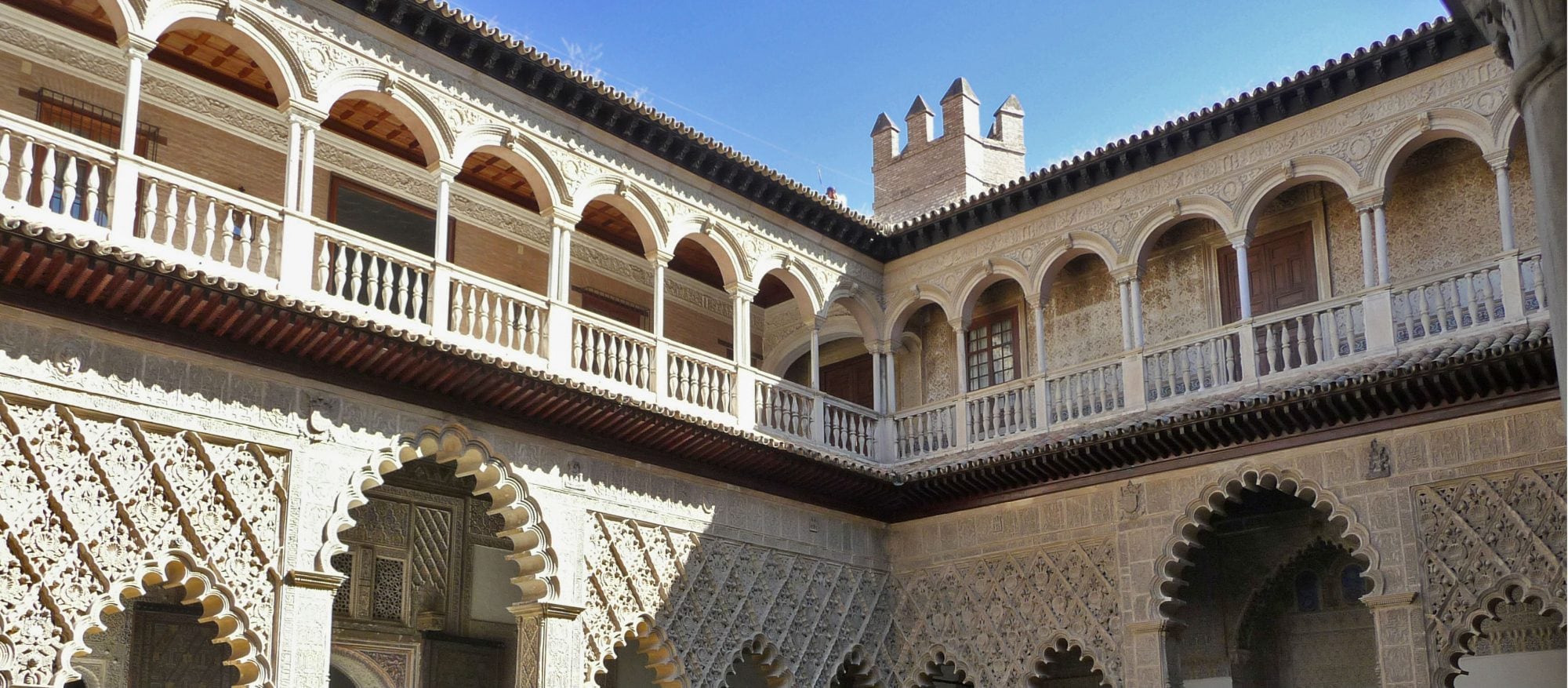
Larger than the palace itself are the gardens, which must be explored. They are rich in tall palms, orange and citrus trees, tiled walkways and small squares with benches and fountains. Free-roaming peacocks add a little exotic flair. It’s no surprise that the gardens were used as the backdrop for the Water Gardens of Dorne in the popular fantasy series Game of Thrones.
Tip: the high walls really help to keep the noise of the city out. Take a moment’s rest and relax with a good book on a shaded bench.
The cathedral of Seville and La Giralda: landmarks of the city
Seville Cathedral is the third largest Christian cathedral in the world, so there’s a lot to see. Each part of the cathedral has its own role and you’ll notice a variety of different architectural styles that crept in over the cathedral’s multi-century construction. Did you know that Seville Cathedral contains the grave of Christopher Columbus?
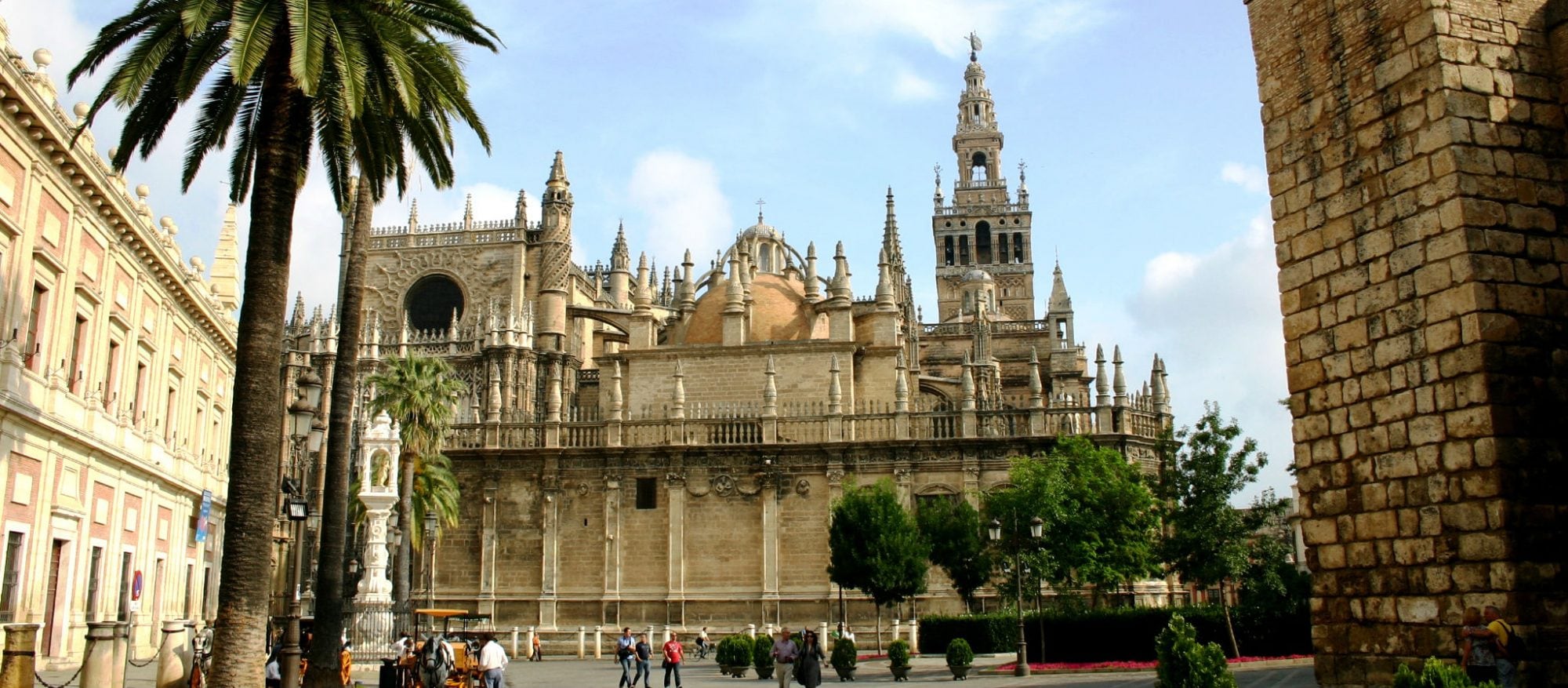
The tower on the cathedral is the oldest part of the building and was, at the time of the Moors, the minaret of a mosque. It’s the tallest building in the city and the main landmark of Seville. From its spire, you can enjoy views over the whole of the city. For those who don’t fancy the climb, don’t worry – there are just a few steps at the end, the rest of the ascent is via a ramp.
Tip: take a guided tour over the roofs of the cathedral and enjoy the fantastic view of the city and fascinating insights into the architecture of the building.
Las Setas: a very special viewing platform
The Setas stretch over the Plaza de la Encarnación like a gigantic parasol – in fact, the official name of the viewing platform is ‘Metropol Parasol’. It was christened ‘Las Setas’, by locals who think that the wooden structure, designed by a German architect, looks more like three gigantic mushrooms growing out of the ground.
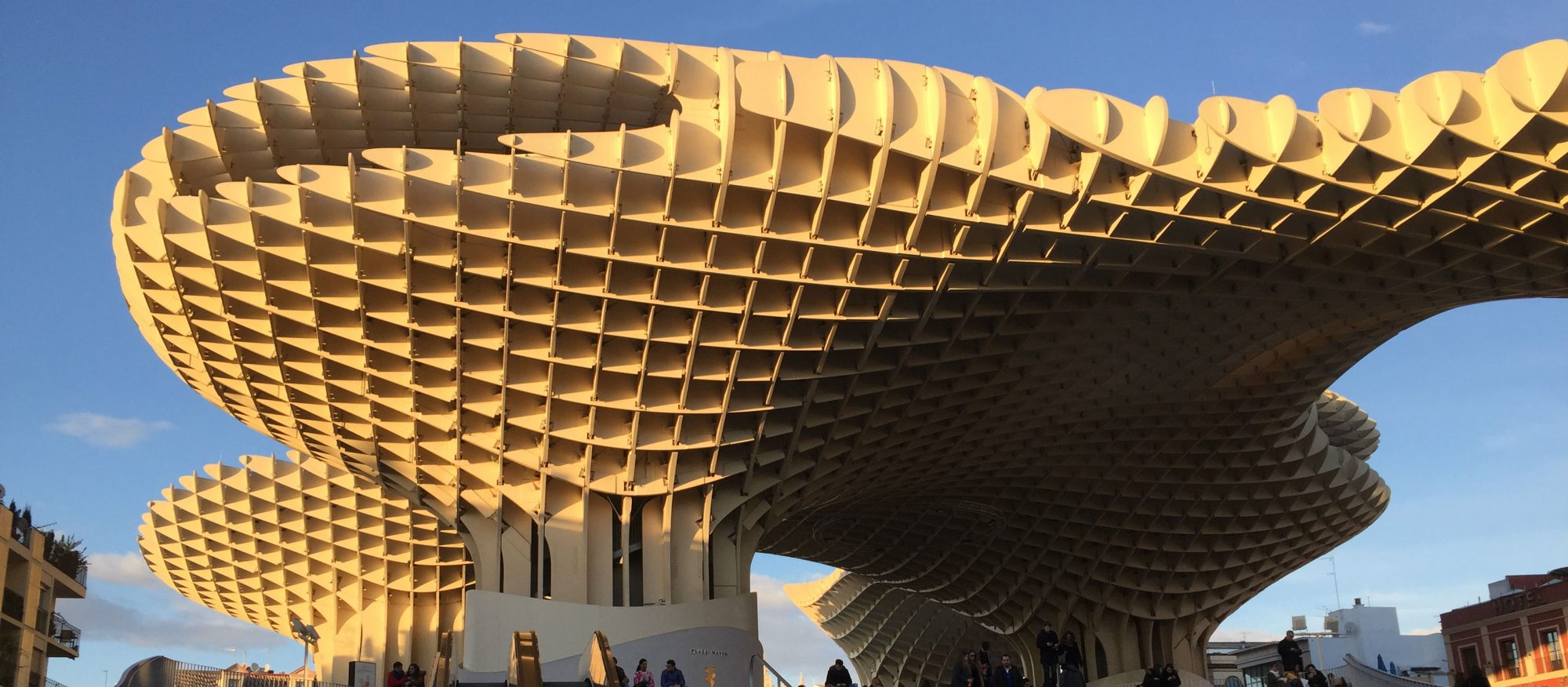
From here, you can enjoy a view of the city without the strenuous climb of La Giralda as a lift takes you to the top. For a view of the city’s rooftops, it costs just €3, which also gets you a postcard from the gift shop and a free drink from the bar on the Setas.
Tip: the panorama is especially beautiful at sunset when the setting sun gives Seville a pinky sheen.
And there’s so much more…
Alongside the must-sees, a camping city break to Seville gives you the opportunity to discover so much more. Anyone who’s interested in Spanish culture should visit the bullfighting arena ‘La Maestranza’, where bullfighting still takes place. Irrespective of the moral debate surrounding bullfighting, the area is an exciting piece of history, as well as beautiful architecture.
Crossing the Puente de Triana bridge over the river takes you to the Triana area of the city. The market hall at the entrance to Triana is the perfect place to sample and buy fruit, fish, meat and Spanish delicatessen.
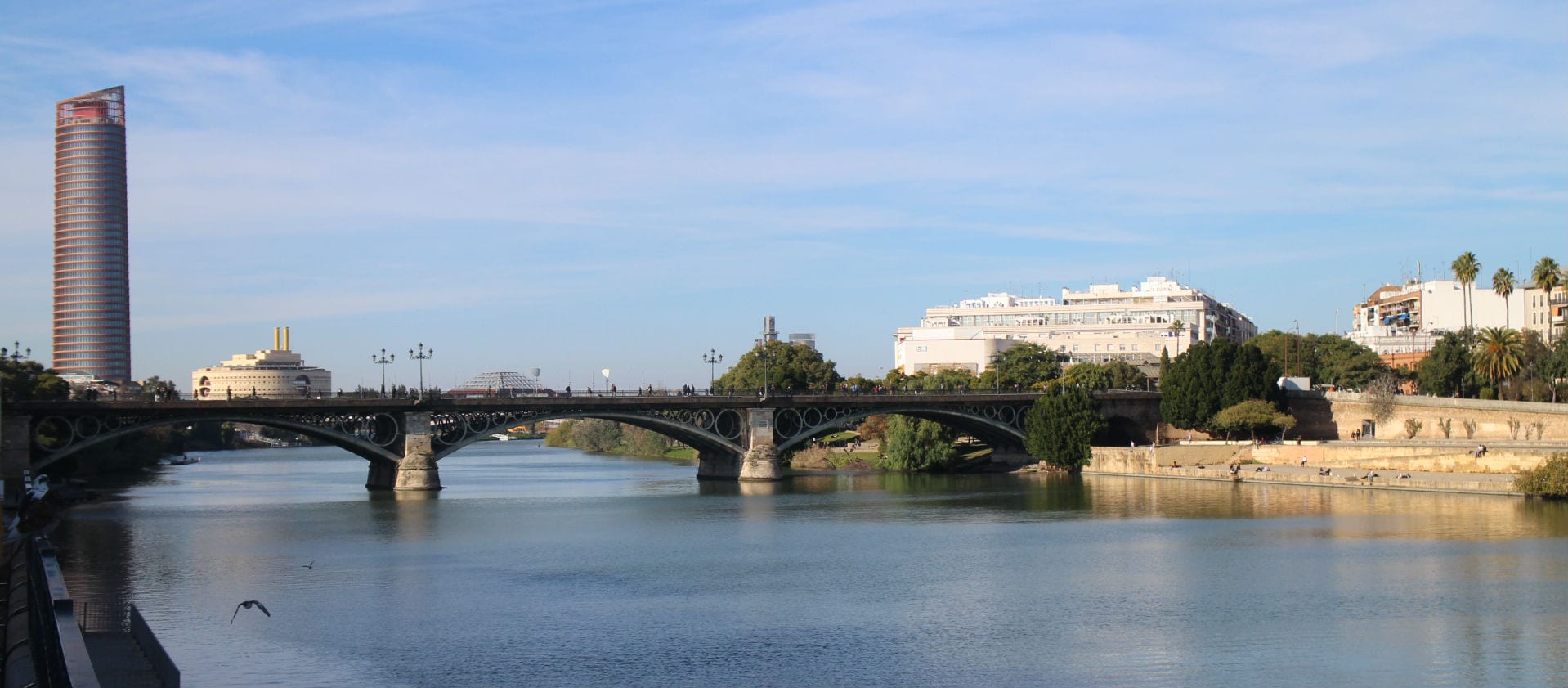
Music and dance are closely entwined with Spanish culture, and you’ll notice it everywhere you go in Seville – after all, it was in the streets of Seville that Flamenco was invented. You can find out more in the Flamenco Museum. Even better, why not experience Flamenco up close? There are regular performances in Triana.
Torre del Oro another landmark of Seville and was previously the watchtower on the city boundary. Today, it houses the city’s navigation museum, the city having once accommodated the most important port in the whole of Andalusia.
Tapas, tostadas and tinto de verano
Spain is famed for its great food and great wine, and Seville will not disappoint.
If you miss breakfast on the campsite, don’t worry – nearly every bar, café and restaurant offers a cheap and authentic Spanish breakfast. For those who prefer a sugary start to the day, churros with chocolate are a real speciality. For something more hearty there are tostadas, which are toasted bread rolls, usually with oil and tomatoes and, if you prefer, ham and cheese. Tortillas are often offered as a breakfast snack. There’s also freshly squeezed orange juice, which tastes much better than at home, and good coffee. And all for no more than €10 per person.
The people of Seville tend not to eat a lot at lunchtime as it’s usually too hot for a large meal. A snack of salmorejo (cold vegetable soup) or a couple of cold tortillas is typical lunchtime fare. Plus, it’s not uncommon to see a couple of locals enjoying a lunchtime beer or wine in the bars. A much loved drink in Spain is wine with lemonade, known here as tinto de verano or ‘summer wine’.
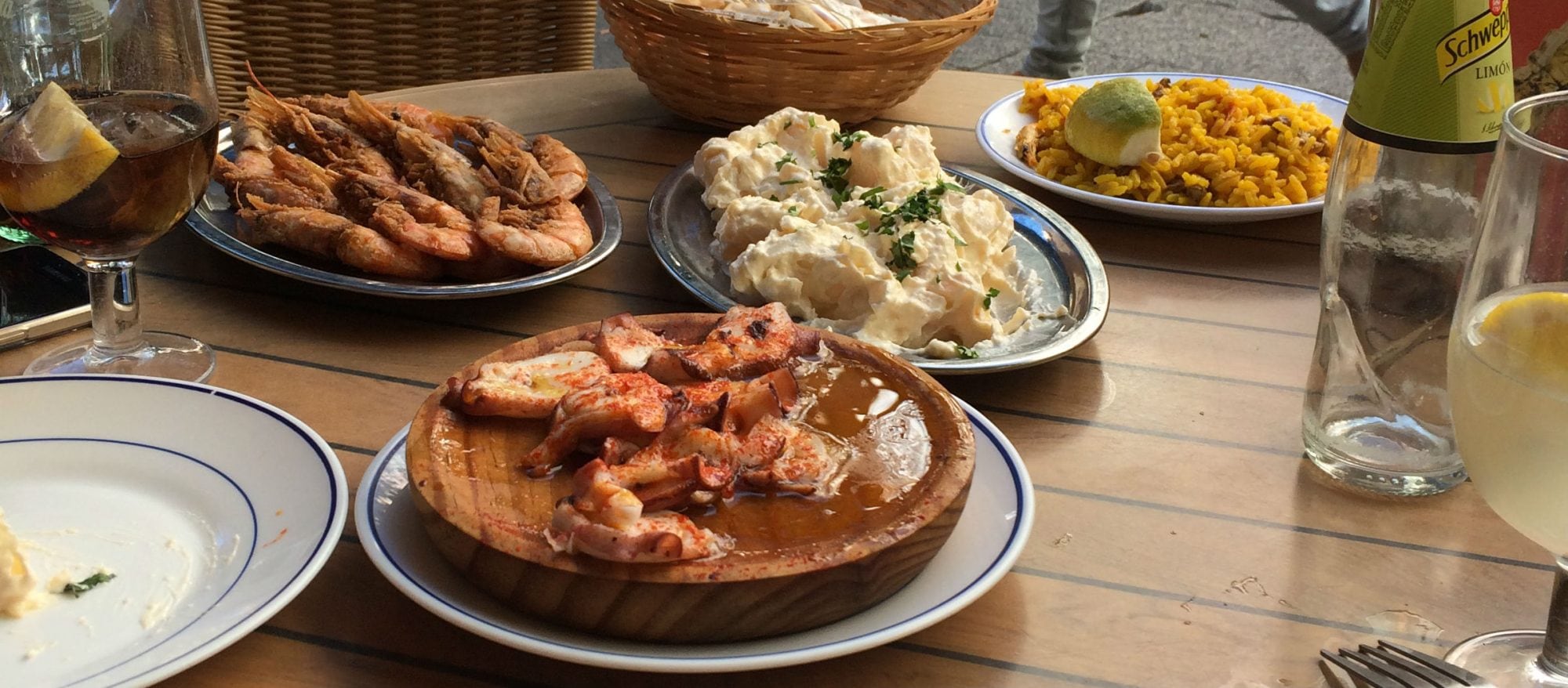
In Seville, the evening meal is enjoyed late in the evening as the sun slowly sets. The choice of great restaurants and tapas bars is so vast that six months really wasn’t enough to try all of them, and a camping trip certainly won’t be! For real Spanish tapas, the best places are Dos de Mayo of Los Coloniales. If you really don’t know what you fancy, head to Alameda de Hercules, a square encircled by restaurants. There you’ll find Las Columnas for example, serving Spanish tapas. You can enjoy good international cuisine at low prices at Karpanta, and for Italian pasta and pizza, try Al Solito Posto.
Practical tips
When is the best time to visit Seville?
In July and August, daytime temperatures can often climb above 35 degrees. More comfortable temperatures can be enjoyed in autumn and spring. In the low season, it is also often possible to camp inexpensively in the area.
There’s a particularly special atmosphere in Seville during Semana Santa in Holy Week and during Feria de Abril. The city is usually very busy but festive and you can take part in one of the many parades and celebrations.
Journey
Seville airport is located around twenty minutes outside of the city. If you’re coming with your own caravan or mobile home, you should plan several days for the journey. There are a number of interesting locations along the route that can serve as stopovers, such as San Sebastian and Valencia. You can take the bus or tram into Seville from campsites outside of the city.
Getting around
Most routes are easy to cope with on foot. For greater distances, the city has an extensive bus network. Tabaco stores sell travel cards onto which you can load money to use the buses. Seville also has bicycles that you can hire dotted at stations around the city. A short-term rental for a city trip costs €5.
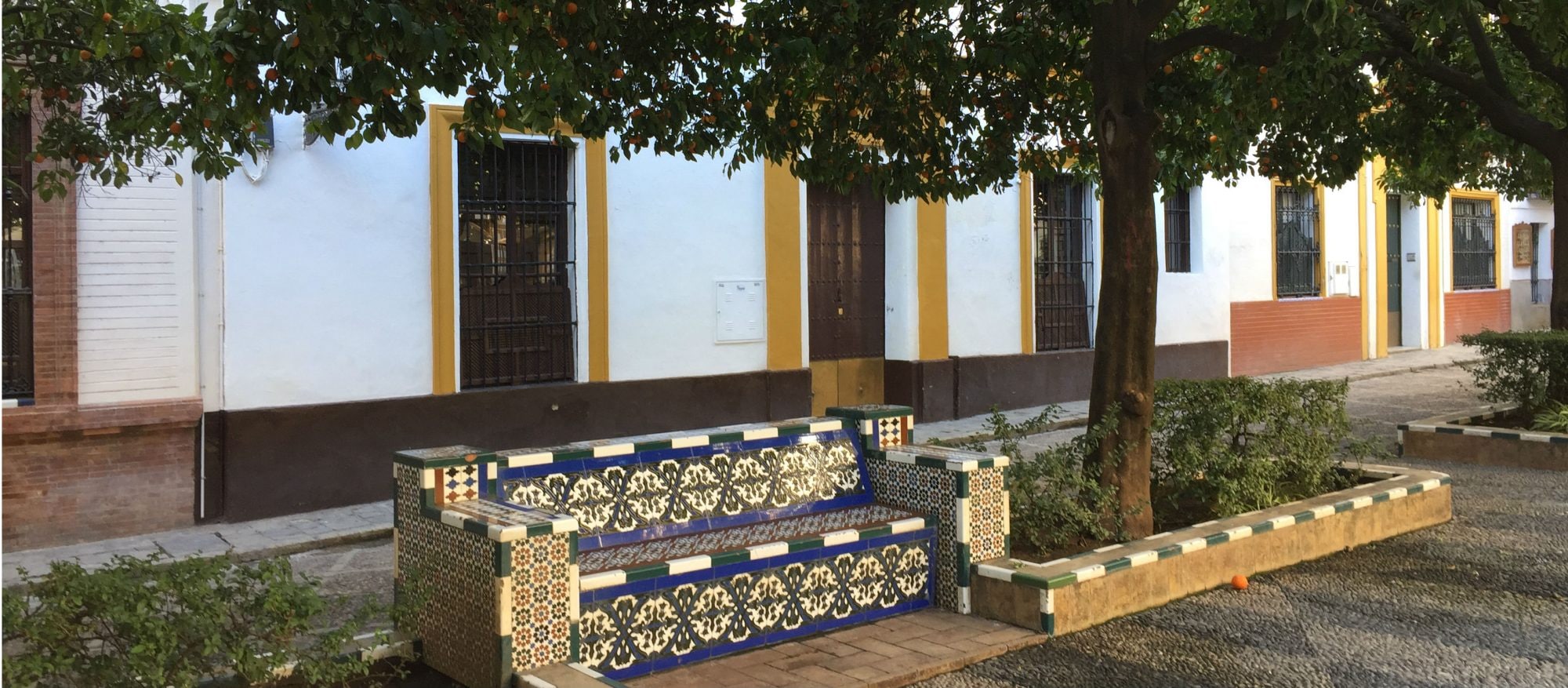
Seville is there to be enjoyed
City trips are often hectic as you try to see as much as possible in a short time. But whatever sightseeing you do, you should always remember to enjoy yourself – something that Spaniards are very good at. Mottos such as mañana, mañana (‘tomorrow’s another day’) and no pasa nada (‘everything will be OK’) dictate life in the city. Take a look at the calm and serenity of the Spaniards and enjoy a stress-free holiday in Seville.
Campsites near Seville
Campsite Villsom is less than half an hour away from the centre of Seville. There is a bus connection.
Camping La Fundición is located in a nature reserve about 1.5 hours from Seville.
The lovely, quiet Camping Village Doñarrayan Park is less than an hour from Seville.
The beautifully kept campsite La Aldea is about 1 hour from Seville.
The Pueblo Blanco campsite provides an amazing view. The drive to Seville takes about 1.5 hours.
Read more about Andalusia
More tips for a holiday in Andalusia can be found in the blogs with travelogues about Córdoba, Ronda and El Torcal de Antequera.


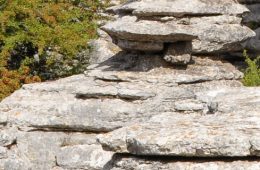
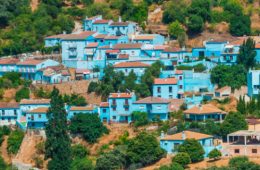
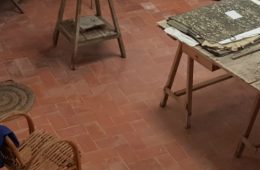





4 Comments
Beautiful column Madita Beik and a beautiful southern Spain Danny Scannell
Bardzo dziękuję za e-mail właśnie jestem w Medinie i wybieram się w czwartek do Sewilli i będę ją zwiedzał według wskazań
Enjoy Sevilla!
I love this article – good layout, easy read, gets one excited to go. Well done. Could do w more pictures, photos – you can never have too many for such subjects, but I suppose space/length considerations apply